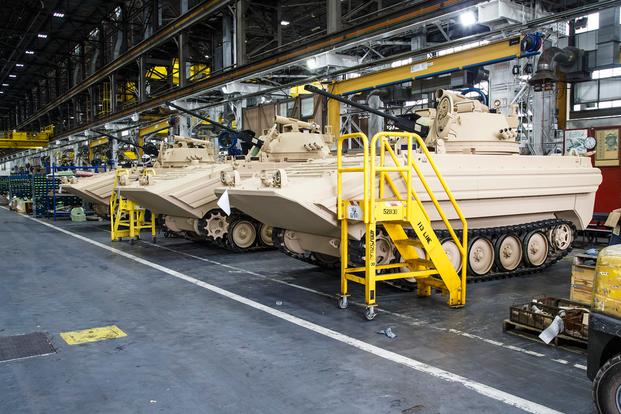More than half of the military's repair and maintenance depots for major weapons systems are in poor condition, resulting in delays in getting assets from submarines to tanks back in the field, according to a Government Accountability Office report.
Of the 21 depots that maintain, overhaul and repair complex weapons systems, 12 were listed in poor condition and operating with equipment past its expected service life, according to the 77-page GAO report, issued Monday.
The result has been a "general decline in depot performance over the past 10 years" and delays in returning weapons systems to the field for operations and training, the report states.
In addition, "the military services can't determine how much of the decline is due to facility and equipment problems," according to the GAO, Congress' audit, evaluation and investigative arm.
The report makes 13 recommendations that mainly would require the service secretaries and the commandant of the Marine Corps to develop methods for tracking when depot conditions or the condition of the aging equipment used at the depots cause maintenance delays.
The Defense Department concurred with 12 of the recommendations but "did not concur with our recommendation that the Assistant Secretary of Defense for Sustainment develop an approach for managing service depot investments," the GAO said.
The report states that poor conditions at the facilities "can make the overall repair process less efficient, as maintainers perform workarounds that can increase maintenance time and costs."
"Because the depots are generally operating with equipment past its expected useful life, the depots may be incurring costs related to operating aging equipment, including performing equipment repairs, procuring spare parts, and expending labor hours to repair equipment while at the same time delaying mission-related work," the report adds.
The report cites the following examples:
- At the Albany, Georgia, Production Plant, a shortage of paint booths results in vehicles remaining unpainted and stored outside, but exposure can lead to rusting that increases maintenance time and cost.
- At the Norfolk Naval Shipyard, officials had to re-inspect 10 years' of parts made in a single furnace, after it was discovered that the furnace's controls were reading incorrectly.
- At the Corpus Christi, Texas, Army Depot, engines were being moved across five miles of facilities to conduct repairs.
"According to officials at the depot, this is the result of years of incremental construction that did not allow them to optimize their workflow," the report states.
-- Richard Sisk can be reached at Richard.Sisk@Military.com.












